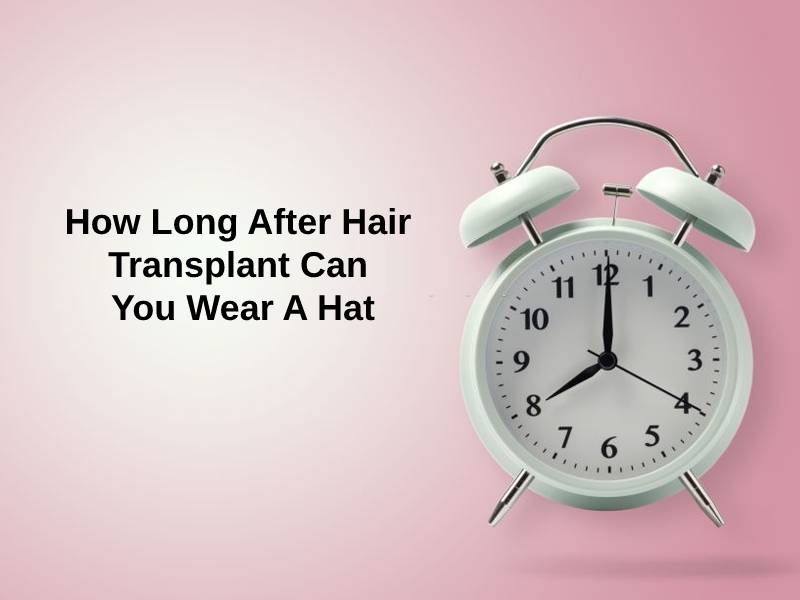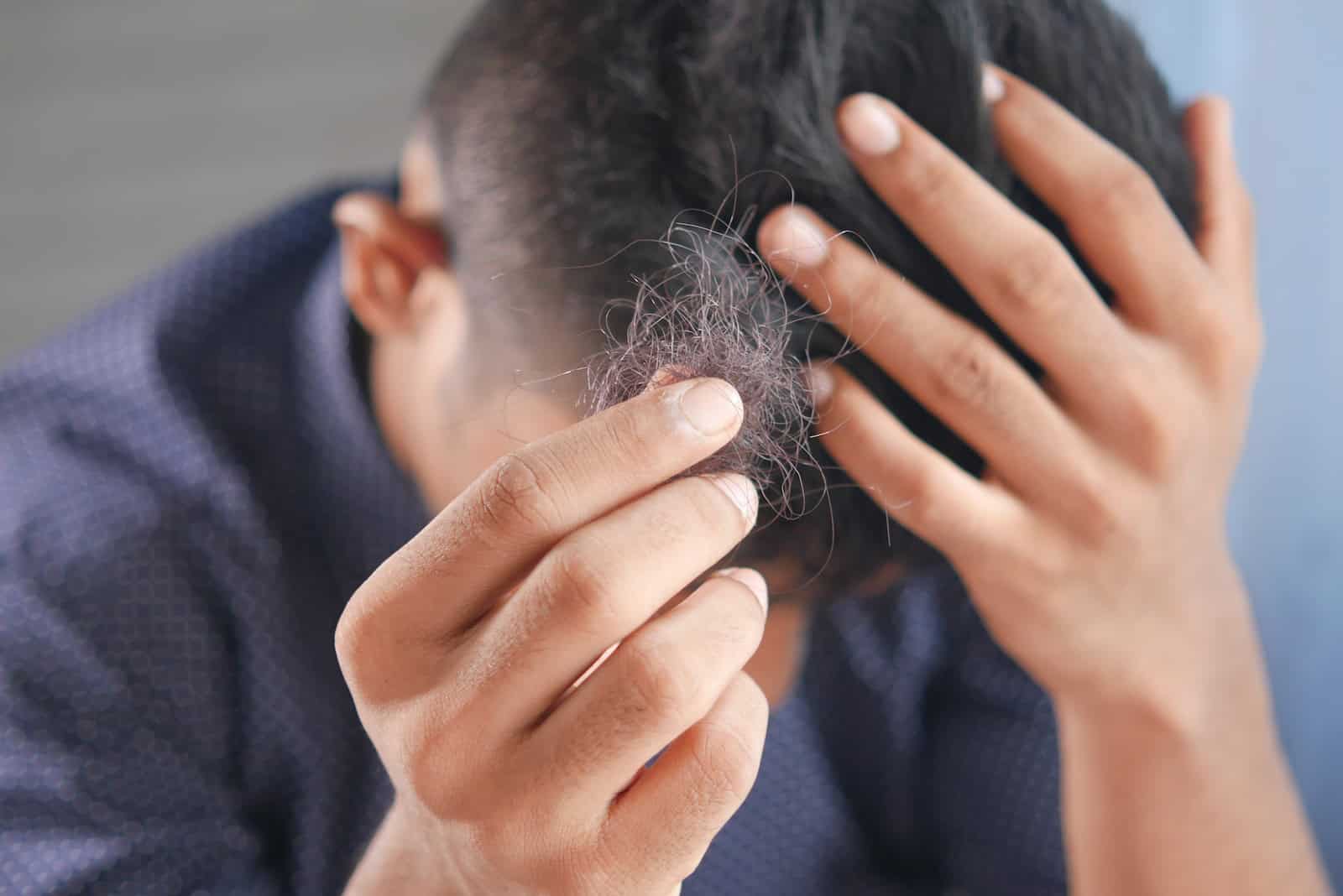Exact Answer: 7 – 10 Days.
A hair transplant is a procedure in which a dermatological surgeon moves hair to a bald area of the head. The surgeon moves hair from the back or side portion of the head to the front or top of the head where the hair density is extremely low. The procedure involves taking healthy hair follicles from the donor area and implanting them into recipient areas of the scalp affected by hair loss.
Hair transplants are conducted at high rates. However, what is most important is how well one follows the surgeon’s post-surgery instructions and takes care of one’s new hair grafts to achieve the best and optimum results from the hair transplant procedure.

How Long After Hair Transplant Can You Wear A Hat?
To avoid damaging the fragile and new hair grafts, patients are recommended to wait until 6-7 days before wearing any kind of hat or cap. If you need to cover your scalp anytime before the sixth day, it may be possible to wear a very loose-fitting hat that must not come in contact with the new hair grafts.
The implanted grafts are extremely tender and should not be touched for the first five days after the surgery. Post-surgery, the scalp might show some signs of scabbing and redness which is quite normal after a hair transplant.
Our looks indeed determine the level of our confidence today. In the quest to improvise our look, we must not compromise on adhering to the precaution and guidelines that are given by the doctor when one has undergone procedures like a hair transplant.
After this procedure, the grafts are sensitive and require special care to facilitate successful healing. Therefore, they should be protected from any kind of touch as possible for the first 6-7 days after surgery.

| Effects After Hair Transplant | Days After Surgery |
| Signs of redness, swelling, and scabbing | 1 to 4 |
| Reduction and healing in swelling and redness | 4 to 7 |
| Proper grafting of newly transplanted hair follicles and their growth | 7 |
Why Can You Wear A Hat So Long After Hair Transplant?
One of the most common queries of hair transplant patients is how soon after the surgery is it safe to wear a hat. Following the hair transplant, the patient may experience some bleeding, swelling, and scabbing in the initial days after the procedure. At this point, the scalp is extremely sensitive, surgeons recommend waiting for at least 7 days before wearing anything over the scalp to ensure that the hair grafts are permanently anchored to their new position on the scalp.
Wearing a hat could risk the grafts getting compressed, damaged, or worse, displaced. If the newly implanted grafts get damaged, they can create empty patches in the new hair implanted region on the scalp and thus, jeopardize the entire hair transplant recovery process. To avoid any kind of serious complication post-operation, wearing a hat is considered safe once the new hair grafts are permanently anchored.

Even when wearing any type of headpiece post hair transplant, certain precautions must be taken like not letting the cap or hat touch the implanted grafts while wearing or taking it off. Wear headpieces made of soft fabrics and if possible, avoid cotton as it sticks to the scalp and causes irritation. Wearing clean hats will ensure that there is no risk of any infection. Refrain from wearing a hat or any headwear for long durations of 5-6 hours a day.
Conclusion
Wearing a hat immediately after the transplant could dislodge, move or even compress the grafts that could result in the outcome not being satisfactory as desired.
Thus, after undergoing a hair transplant, give a sufficient amount of time to the newly implanted hair follicles to get adjusted to their new position of the scalp and don’t disturb fragile follicles by touching or wearing a hat. As recommended by doctors, wait for at least a week, till the hair grafts are permanently implanted onto the scalp, to wear a hat or any other headwear.
The conclusion provides a clear and concise summary of the importance of giving sufficient time to the newly implanted hair follicles to ensure a satisfactory outcome. It effectively emphasizes the significance of adhering to post-surgery recommendations.
Absolutely. The conclusion reiterates the importance of following post-surgery recommendations for successful results.
The article effectively explains the reasons for waiting before wearing a hat post hair transplant. It provides clear and logical explanations that are beneficial for patients.
I agree. The explanations help patients understand the importance of waiting to protect the newly implanted grafts.
The information provided regarding the effects after a hair transplant and the precautions to be taken is quite comprehensive. It’s crucial for patients to be well-informed about these matters.
I agree. It’s important for patients to have a clear understanding of the recovery process after a hair transplant.
The information provided about the precautions to be taken while wearing a hat post hair transplant is quite valuable. It emphasizes the significance of ensuring the safety of the newly implanted grafts.
Absolutely. Protecting the newly implanted grafts is essential for a successful recovery process.
I completely agree. Patients need to be aware of the precautions for protecting the newly implanted grafts.
The article effectively outlines the precautions that need to be taken while wearing a hat post hair transplant. It’s informative and helpful for those who have undergone the procedure.
It’s interesting to learn about the specific signs of redness, swelling, and scabbing at different stages after hair transplant surgery. This information adds value to the understanding of the recovery period.
Absolutely. Knowing what to expect during each stage of the recovery process is beneficial for those considering a hair transplant.
The information provided about the precautions to be taken while wearing any type of headpiece post hair transplant is quite valuable. It highlights the importance of ensuring the safety of the newly implanted grafts.
You’re absolutely right. Protecting the newly implanted grafts is crucial for a successful recovery process.
The article effectively emphasizes the importance of giving the newly implanted hair follicles sufficient time to adjust to their new position on the scalp. It provides valuable insights for patients recovering from a hair transplant.
You’re right. The article provides important insights into the recovery process after a hair transplant.
The explanation of why it’s necessary to wait before wearing a hat post hair transplant is quite convincing. It’s crucial to protect the newly implanted grafts to facilitate successful healing.
Indeed, protecting the newly implanted grafts is essential for a successful recovery.
This article effectively explains the importance of following the surgeon’s post-surgery instructions and taking care of one’s new hair grafts to ensure the best results from a hair transplant procedure.
You’re right. It’s crucial to adhere to the post-surgery instructions for optimal results.